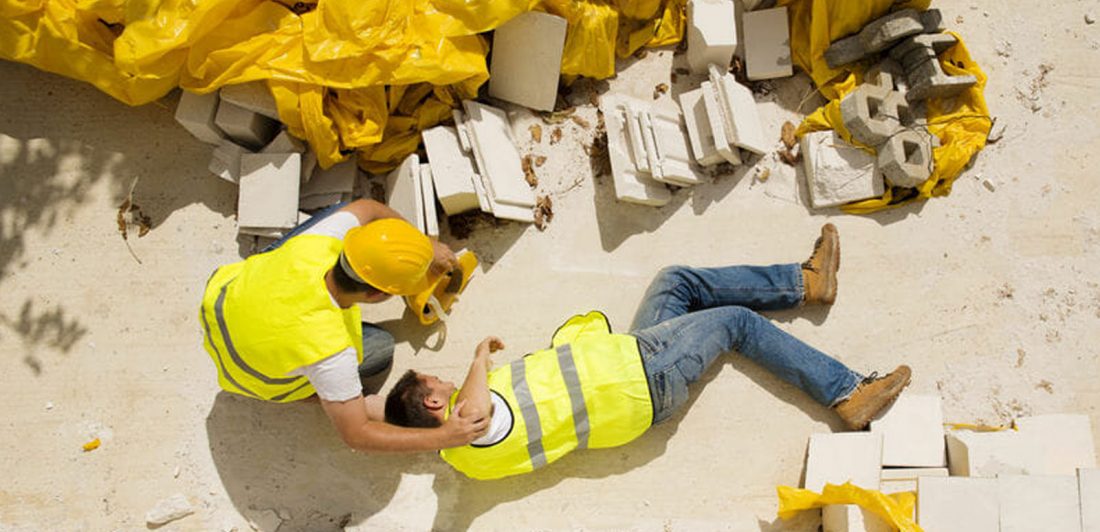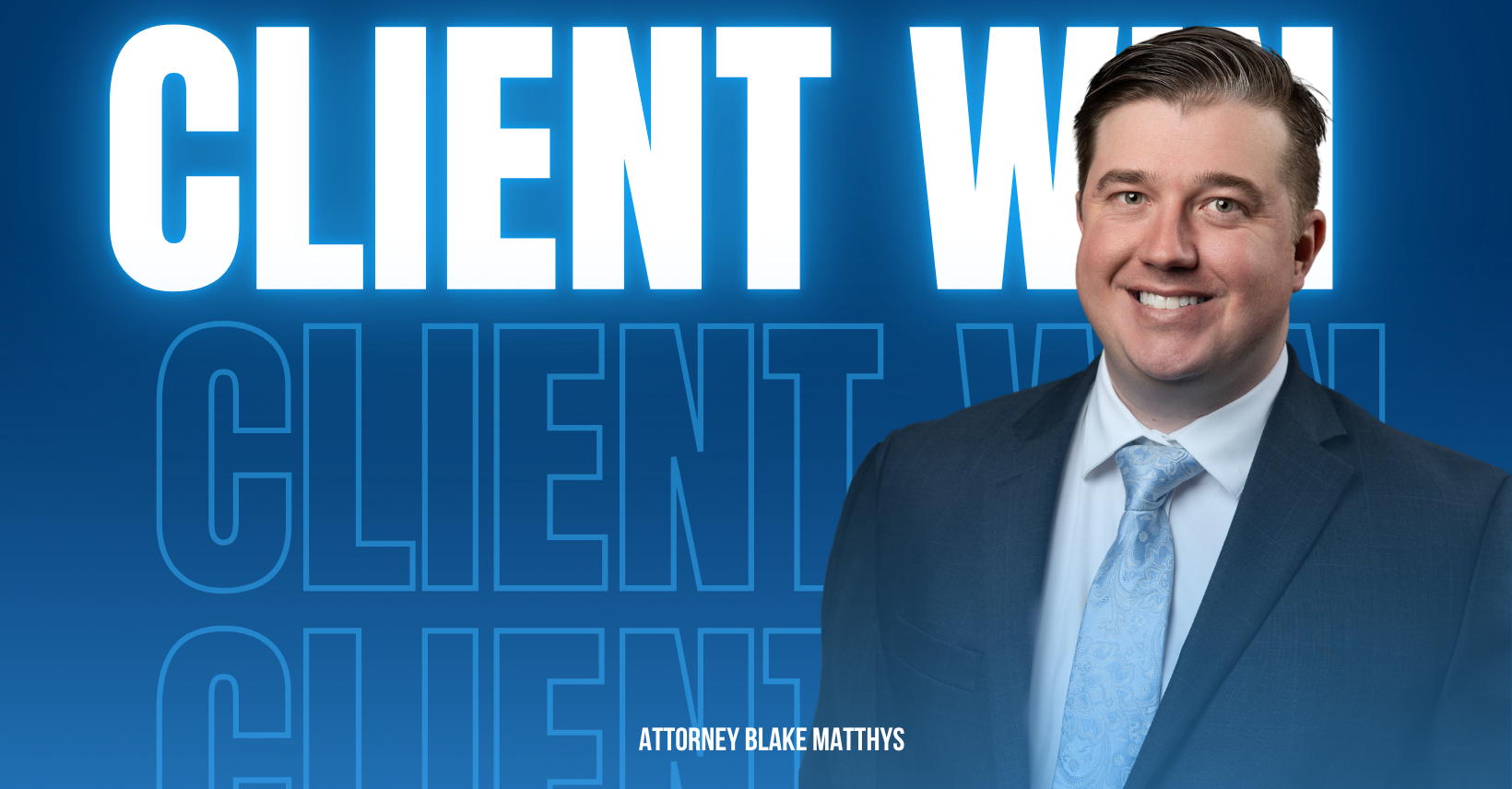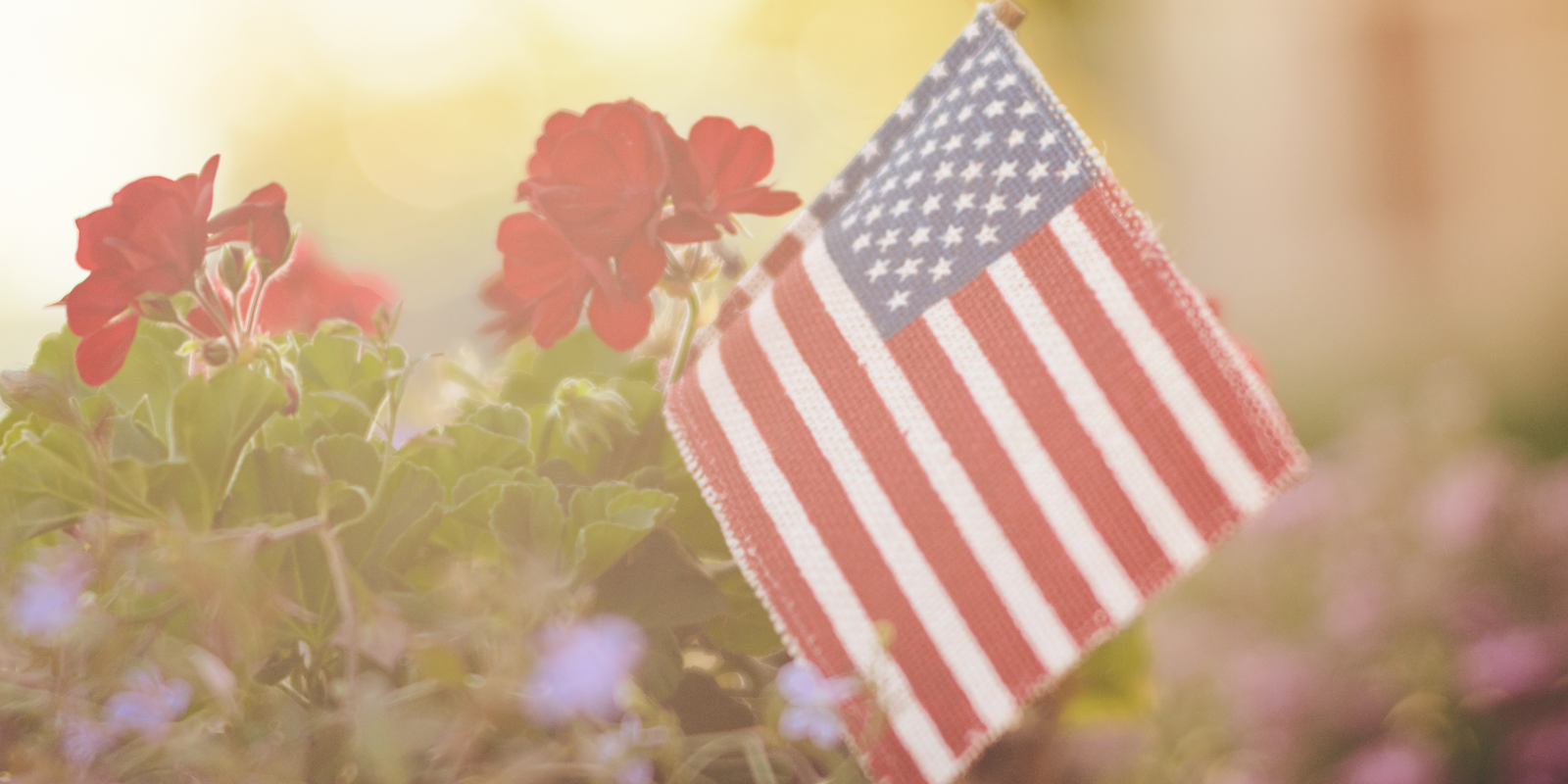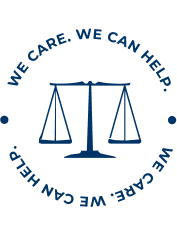According to the Occupational Safety and Health Administration (OSHA), the most frequent workplace injuries involve trips, slips, and falls. Approximately 19,565 people die annually from injuries sustained by unintentional falls. In fact, according to the U.S. Bureau of Labor Statistics, in 2019, injuries from falls, slips, and trips in the workplace led to 880 deaths.
There is a common misconception that slip and fall injuries are less serious than other personal injuries. However, this is simply not true, unintentional falls can result in devastating, potentially life-threatening injuries.
A significant amount of people and families have been affected by unintentional falls in the workplace. But falls, especially in the workplace, are 100% preventable.
Cause of Slip and Falls
Slips are the result of an unexpected change between a person’s feet and the surface that they are walking on. There are many factors that contribute to an unsafe workplace that may lead to unintended falls such as:
- Wet surfaces
- Uneven surfaces
- Descending stairs
- Floor cleaning
- Vehicles (especially exiting)
- Pallets and other objects obstructing walkways
- Ice, snow
- Housekeeping issues
- Poor lighting
- Human Error
Fall incidents can be classified into two groups:
- Same level falls occur most frequently and generally result in minor injuries. They are generally caused by unsafe floor conditions, such as slippery surface, objects restricting one’s path or uneven surface space.
- Elevated falls happen when someone takes a spill from a height. These falls can results from falling from a ladder, a vehicle, loading docks or downstairs. Typically elevated falls result in more severe injuries.
Injuries Resulting from Slip and Falls
One out of every five falls results in serious injuries such as broken bones or a head injury. In 2014, almost 50,000 workers experienced a fall causing injuries severe enough to require days off work.
A slip and fall can impact a worker’s life, the potential injuries can range from minor to life-threatening. Potential slip and fall injuries include the following:
- Head injuries. Even a minor head injury requires immediate medical attention. Concussions generally clear up on their own. However, Traumatic Brain Injuries (TBI) can permanently alter one’s ability to function.
- Broken Bones. Whether it be a minor fracture or a severe break, broken bones are extremely painful and can take a considerable amount of time to heal.
- Spinal Cord Injuries. Spinal cord injuries occur when the spinal cord becomes compressed or severed. In fact, these injuries are especially serious because they can produce paralysis.
- Cuts and Abrasions. Expected in most slip and falls, cuts and abrasions can also range in severity. If cut deep enough, stitches may need to close the wound.
- Soft tissue injuries. The most common type of injury. Soft-tissue injuries include sprains, bruises, strains, and tendonitis.
- Death. In the most severe cases, a person can die from a slip and fall. Head, neck, and back injuries can be fatal.
Industries Most at Risk for Slip and Falls
Workplace slip and falls are not industry-specific injuries and can occur across many different occupations. The most at-risk professions are:
- Construction
- Transportation
- Education and Health Services
- Manufacturing
- Wholesale trade
- Government
- Transportation and Warehousing
- Government
While some professions are more dangerous than others, office workers are not shielded from the possibility of workplace falls. In fact, falls are the most common accident among office workers. Office place falls are frequently caused by the following:
- Poor lighting
- Tripping over desk drawers, wires and cords, and loose carpeting
- Using chairs instead of ladders
- Unstable chairs and office furniture
In addition, while many believe that workplace injuries are a problem that only contract or hourly workers face, salaried and even self-employed employees also run the risk of slip and fall injuries.
Best Practices to Prevent Workplace Slip and Falls 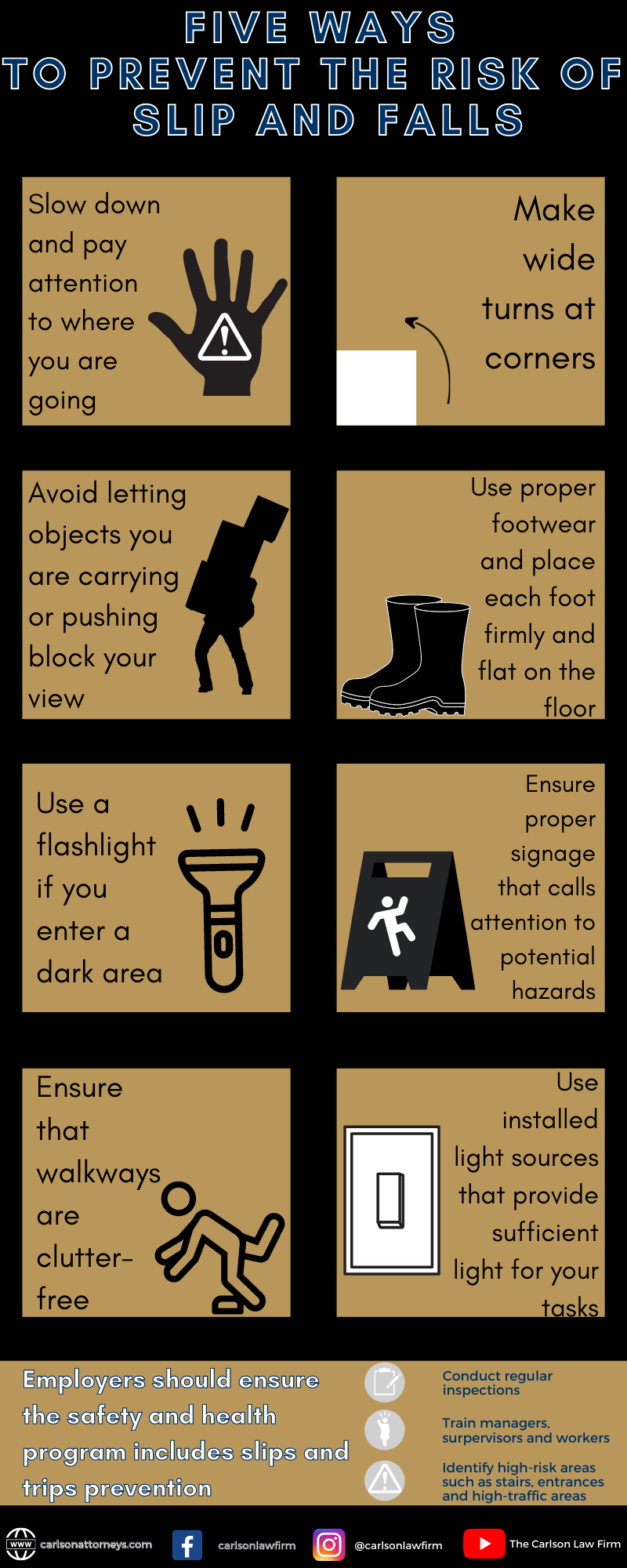
Slips, trips and falls are among the leading causes of workplace injuries. There are plenty of ways to proactively manage your working environment to reduce the possibility of slip and falls. Check out these 8 tips on how to avoid slipping in the workplace:
- Ensure that walkways are clutter-free. This should be a no-brainer. Keeping walkways clear greatly reduces the potential for a trip, slip, and fall.
- Wear appropriate footwear. It is extremely important to wear shoes with proper traction for working conditions. Such as non-slip shoes.
- Immediately clean up spills. If there is a spill on the floor, immediately clean it up. Slippery floors are prime conditions for slip and falls. Immediately wipe up spills and place proper signage.
- Proper lighting. Steps and other hazards may be lurking in the darkness. It is important that lighting inside and outside of the workplace illuminates all areas that employees are customers will walk.
- Proper signage. A well-placed sign calls attention to potential hazards. Signs can indicate wet floors, steps, and loose gravel. Reflective tape may also be used on steps to make them more visible.
- Stairways and handrails. Stairways can be dangerous. All stairways should be equipped with handrails and top and bottom stairs should be marked with reflective tape.
- Report unsafe conditions. Areas that look unsafe should immediately be reported to supervisors.
- Non-skid rugs. Rugs are a great way to keep areas that are prone to slipperiness, dry, such as bathrooms. Rugs can also be added to other wet areas.
What to do after a slip and fall in the Workplace?
After suffering a workplace fall, the first thing you should do is report the incident to a supervising authority-if your injuries allow you to do so. Secondly, if possible, gather information from anyone who may have witnessed the fall. Most importantly, seek immediate medical attention, more specifically from your health care provider. Prompt medical treatment will help you to understand the extent of your injuries. Then, contact a qualified workplace slip and fall attorney to guide you on your next steps.
What are some forms of compensation I may seek?
Once you are ready to speak to an attorney, a personal injury lawsuit can allow you to pursue compensation for the costs associated with your slip and fall accident. Through a premises liability lawsuit, you can pursue compensation for:
- Medical bills
- Continued medical treatment (if applicable)
- Lost income from time off work
- Reduced future earning capacity
Although a slip and fall don’t harm a person financially, it may lead to months or years of pain that may lead someone to lose the ability to do activities they once enjoyed.
How The Carlson Law Firm Can Help
Slip and falls can lead to devastating, life-altering injuries. If you or a loved one experienced a slip and fall in the workplace, The Carlson Law Firm is ready to help. Our qualified attorneys can guide you through the legal process and assist in recovering compensation for past and future loss of income, medical bills and other damages resulting from your injuries. Contact The Carlson Law Firm for a free case evaluation. Our qualified slip and fall attorneys will work hard on your behalf to get you a favorable resolution.

